The city of Kolkata is a story teller’s paradise- enigmatic stories hidden beneath the chaos and intensity which greet you and every story should be discovered on foot....
So put on those walking shoes and let us take you on a walk through the lanes and by lanes, nooks and crannies which form the soul of Calcutta . From history to architecture , food to culture see the story of the City of Joy come alive.
An area intrinsically connected with the early 18th and 19th century development of Calcutta, albeit ignored, is the Khidderpore and the Garden Reach area. It is one of the oldest neighbourhoods of the city with the Ghoshals being the first zamindars to relocate here when displaced by the construction of the Fort William. The remnants of the huge Rajbari, their temples, and ponds still stand as witness to the glory of the area. The age old bridges meant to connect the Khidderpore to Garden Reach area, located right opposite the Botanical Gardens in Howrah, the jute mills dotting the banks of the Hooghly, and further down the Metai Burz area which was transformed into ‘Mini Lucknow’ by the exiled Nawab of Awadh, Wajid Ali Shah, makes this entire belt a microcosm of cultures replete with Indian, European, especially Scottish under currents.
To get a feel of this precinct join us for the “Garden Reach Tour” in collaboration with the University of Edinburgh, Asia Scotland Trust, and Neeta Shubhrajit Das Associates, in an attempt to unfold this forgotten precinct.

This walk which serves as a wonderful introduction to the city - takes the guests through the hows and whys of Calcutta helping them retrace the steps that gave birth to this city. Considered the Second city of the Empire, proud, elegant and so British…… many grand edifices were built in Calcutta back then. These buildings stand tall and stately. some of which have withstood the vagaries of time, some striving to stay put and a few others which lie in glorious ruins. This walk is in an area which has the finest examples of colonial heritage and reminds one that the city of Calcutta was built on lines of London. Starting from The Lalit Great Eastern we show the buildings which are a part of Calcutta’s imperial legacy.
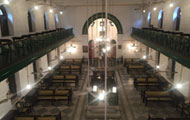
A walk of not more than five square kilometres in size but which is truly a microcosm of the world. An enigmatic walk in the “Grey Town” where you can see the melting pot of cultures that Calcutta is. Starting from the Anglo-Indian quarters in Bow Barracks, we explore the neighborhoods before proceeding to experience the cultures embedded in the Parsi fire temples, the Chinese temples, the Jewish synagogues, the Portuguese Cathedral and the Armenian church all within a small vicinity. The guests would even get to taste local food and while strolling in the neighborhoods soak in the hustle bustle of these markets and absorb the culture of these places and their natives move on with their daily lives.
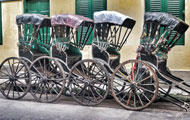
A walk which helps to understand the paradox of Calcutta being dubbed as the “City of Palaces” on one side and the “City of Dreadful Nights” on the other. A walk which will take you through lanes with century old palaces allied by a zigzag of hundreds of narrow by lanes, out of sight courtyards of merchants and noble houses. Winding through the lanes and by lanes steeped in old world charm, listen to the stories associated with the mansions and neighborhoods, some inspiring and some jaw dropping funny. Starting from Girish Park, we snake our way to the house of the man who shaped the history of modern India to the house of the Babu accredited to be the first billionaire. Hear the rustic bhajans emanating from a century old Kali temple and we end the tour at the mansion which was visited by Clive and Hastings.
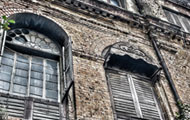
A tour which takes you through the histories of the germination, growth and decadence of the “Babu” culture. A tour where we take you back in time to the city’s more glorious past, where the Babu culture was at its apex, a story telling tour which transports one to the era where ostentatiousness reached its peak. Starting from the Marble Palace we wind our way through narrow lanes and by lanes, seeing the various castles and mansions including the famed Jorasanko Thakur Bari. Liberal doses of anecdotes and history makes this walk a must do for people visiting Calcutta.

Howrah bridge represents the quintessential image of Calcutta; the first thing people see when they arrive here. Howrah station and Howrah bridge are a “real life spectacle” not to be missed by any visitor to Calcutta. And what better way to experience this spectacle it than by ferry and foot, joining the throng of daily commuters, vacationing families, railway porters, tea vendors, fruit sellers, et al. It doesn’t get more real than this!
At the base of the Howrah bridge, on the Calcutta side, is the city’s bustling wholesale flower market, the biggest one in Eastern India. Walking through the flower market is a colourful, fragrant experience Starting from Akashvani Bhavan, we learn a bit of historic trivia of the colonial buildings in the vicinity proceeding towards Babu Ghat for the ferry ride. The Babu Ghat river bank is an interesting place, with lots of activity (traditional masseurs, barbers, priests, and people offering prayers). We will clamber aboard one of the popular local ferries to Howrah. The ride takes about 30 minutes, offering panoramic views of the twin cities (Calcutta and Howrah) on both sides of the river, and the bridge spanning the river. After disembarking, we will visit the bustling Howrah Station. Built in Romanesque style, this huge station is among the largest in the country. From here, we will join commuters to walk on the iconic Howrah bridge back to Calcutta (25 minutes). At the bottom of the bridge, we will visit the Flower Market, with its many stalls buzzing with activity, providing the perfect colourful ending to the walk.
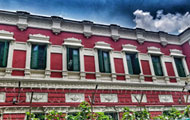
In the nineteenth and early twentieth centuries, Kolkata was the epicentre of an intense social reform movement. Popularly called 'The Bengal Renaissance' A visit to College Street provides an interesting insight into the social and intellectual concerns that shaped India, culminating in the struggle for independence from British rule. We’ll start the walk from the Central Metro Station. From here, we will walk through the nearby area, covering Calcutta Medical College, Calcutta University, College Square, the Mahabodhi Society, College Street (bazaar area), Presidency College, and a few mansions in the iconic Pataldanga area. In between, we will also take a break at the popular Coffee House.
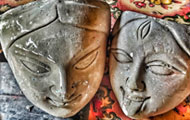
In this walk we cover Kumartolli, the traditional potter’s quarters in the north of the city. Kumartoli- the potters’ quarters in North Kolkata today is a neighbourhood which has attained a cult status. A neighbourhood which was established some 300 years ago by the rich zamindars to cater to their needs for making idols during festivals is now a haven for tourists and locals alike. But is Kumartolli just about these artists? Well, the answer is no...
North Kolkata or Sutanuti of which Kumartolli is an intrinsic part of is the best hub of art, culture, music, cuisines, heritage, philosophy and spirituality. Kumartolli is one of the oldest areas, has the fascinating architectural relics, dingy lanes and by lanes, a never-ending babu culture which we will explore in this walk. We will visit some of the oldest surviving temples in the city and learn about interesting histories associated with them. How about sports history? Yes, a dose of that too in the walk. We will see some heritage houses belonging to some great zamindars, medical practitioners as well as people who moulded the culinary history of Calcutta. The tour culminates with a visit to a ghat where idol making starts with the scooping of the Ganga maati from the river bed and also ends with the immersion of the idols after the festivities.
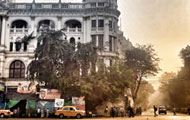
Now named Jawaharlal Nehru Road, this road was the main north south artery through the city, leading to Chitpore in the north and Chowringhee , a village and later a suburb of Calcutta in the south and ran two miles along the east side of Maidan. From the 1770s, the Chowringhee area became the main European part of the town. A walk which shows a slice of any European city within the city.
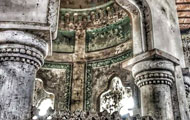
The city of Calcutta developed from a cluster of villages to a bustling metropolis beside the meandering Hooghly and beside the great river several ghats were built to provide easy access to the river….this is what this walk, rather a story telling session is all about. This walk explores the history, romance and mysteries associated with these ghats along with a look at one of the oldest mosque and Siva temple in the vicinity as we amble along the river bank and end the walk with the majestic view of the iconic Howrah bridge and the colourful flower market.
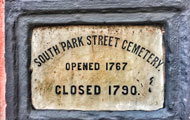
This walk takes you through the old cemeteries of Kolkata. We'll visit South Park Street Cemetery, the largest non-Church cemetery outside Anglo-American world in the 19th century! We will identify different types of grave architecture. Learn about life and death in colonial Calcutta and the graves of its pioneering personalities, and know who the 'most beautiful girl in Calcutta' was in the late 18th century and a hair-raising mission of a British envoy to Tibet.
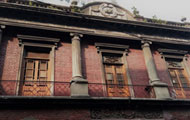
Calcutta boasts the oldest Chinatown in the world and one of the city’s chief attractions for visitors.The Chinese community from several provinces of China started arriving and settling in Calcutta, a thriving colonial capital, since the late 1770s. Soon they started calling the city home. The Chinese in Calcutta became an integral part of the social fabric of the city excelling as artisans, carpenters, launderers and dentists, they built temples in their settlement in Tiretta Bazar. A thriving Chinatown thus came up in the centre of the city, adding to the ethnic and cultural diversity to Calcutta.
In this walk, we will explore what little remains of this Old Chinatown of Kolkata. We will visit 5 Chinese temples.

A thoroughfare with a glitzy and glamorous exterior holds many a secret and amazing anecdote under its belly. Know more about the history of the name of your favourite street in a walk covering the entire length from the Asiatic Society till the site which was considered to be the outskirts of the city. If this sounds intriguing, join in to know what Park Street was Once Upon a Time.
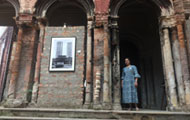
Let us walk down some lost winding serpentine paths dotted with forgotten histories, hidden secrets, culinary delights and some ruins with their arches and collapsed roofs peeping through the grass and shrubbery to be explored. This trail takes you through a thrilling journey of one of the oldest parts of the city bringing the life of those times alive through an interesting session of storytelling.
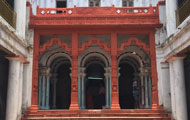
If I were to describe the neighbourhood of Chitpore in one word it would be nothing else but an “enchantress”. Chitpore is Calcutta’s open museum: all the city’s communities, its social classes, men and women of all periods of history find their nook or monuments here.
The city’s oldest roads and the first to be chronicled, Chitpore brings the history of old Calcutta to life. When the new Fort William was being built in the 1750s at Gobindapore, most of the displaced inhabitants migrated to North Kolkata. With the riches they already had and with the additional wealth accumulated by the virtue of their association with the British, the nouveau Bengali gentry proceeded to build massive mansions which Chitpore is replete with. Some of these edifices have withstood the vagaries of time, some striving to stay put, some lying in glorious ruins while others have completely vanished giving way to the modern commercial or residential set ups. But does vanishing actually obliterate the history which is still alive and throbbing albeit now surreptitiously tucked between the folds of the known and the unknown. Come explore the Pilgrim’s Path with us through this walk.
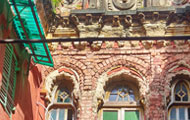
Bidhan Sarani or erstwhile Cornwallis Street was built by the Lottery Commission in the early 1800s. Through the 19th and early 20th centuries, it was the place which was the hot bed for nationalism and the centre of cultural and literary renaissance. In this walk we take you through alleys and lanes which have borne witness to the emergence of nationalist politics, we see places associated with eminent personalities, places which gave the impetus to the movement for freedom. In this walk we try to uncover the roots of the Bengal Renaissance which moulded the modern Indian mind. Much of that heritage has been lost and forgotten. But it still remains the most powerful influence in moulding current social and political thoughts.

If there is one place where culture, history, trade, stories and anecdotes jostle with each other to find place, it is in the narrow lanes of Bow Bazaar. It is here that we find temples, shrines, beautiful baris jostling along with the dingy workshops of the jewellers, the remnants of glorious theatres long gone, the humble dwellings of educators and the silent stories of the famed kothas once centres of a glorious music culture.A walk which truly resonates the fact that Calcutta is a melting pot of cultures.